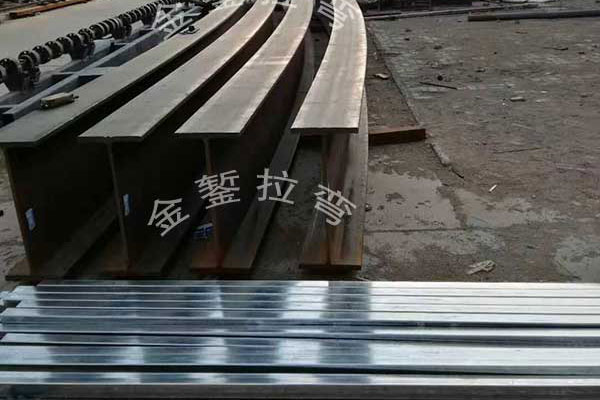Redefining the construction industry with innovative solutions, cuttin-edge technology and sustainable practices
Profile Bending 2025-07-01
Metal bending is a critical process in various industries, including automotive, aerospace, construction, and manufacturing. While it is essential for shaping metals into functional components, several challenges can arise during the bending process that may affect the quality of the final product.
1.Material Variability
Challenge: Metals can vary significantly in composition, thickness, and mechanical properties. These variations can lead to inconsistent bending results, such as unwanted springback or inaccurate angles.
Solution: Conduct thorough material inspections and testing before processing. Implementing a standardized quality assurance protocol can help ensure that all materials meet specified criteria. Additionally, using simulation software can predict how different materials will respond to bending, allowing for adjustments in the process parameters.
2.Springback
Challenge: Springback is the tendency of a metal to return to its original shape after being bent. This can lead to inaccuracies in the final dimensions, especially in tight tolerance applications.
Solution: To mitigate springback, operators can over-bend the material slightly, compensating for the expected return to the original shape. Using advanced tooling and fixtures designed to accommodate springback can also enhance precision. Furthermore, employing techniques like heat treatment can help reduce springback in certain alloys.
3.Tool Wear and Damage
Challenge: Over time, bending tools can wear down or get damaged, leading to inconsistent bends and increased production costs due to frequent tool replacements.
Solution: Regular maintenance and inspection of bending tools are crucial. Implementing a preventive maintenance schedule can prolong tool life. Additionally, using high-quality materials for tools and employing coatings that reduce friction and wear can significantly enhance tool durability.

4.Inadequate Machine Calibration
Challenge: Machines that are not calibrated correctly can produce inaccurate bends, leading to waste and rework.
Solution: Regular calibration of bending machines is essential to maintain accuracy. Establishing a routine maintenance schedule that includes checks on machine parameters like angle, pressure, and speed can help ensure consistent performance. Using digital readouts and automated calibration systems can enhance precision and ease the calibration process.
5.Operator Skill Levels
Challenge: Inconsistent skill levels among operators can lead to variations in bending quality. Less experienced operators may not fully understand the nuances of the bending process, resulting in errors.
Solution: Comprehensive training programs that cover all aspects of metal bending, including machine operation, safety protocols, and quality control measures, are vital. Regular workshops and hands-on training sessions can help enhance the skills of all operators, ensuring a more uniform output.
6.Inadequate Quality Control Measures
Challenge: Without robust quality control measures in place, it can be challenging to detect defects early in the manufacturing process.
Solution: Implementing a multi-stage quality control process can help catch defects before they become significant problems. Utilizing tools such as laser measurement systems and vision inspection can ensure that parts meet specified tolerances. Additionally, incorporating feedback loops where operators can report issues and suggest improvements can foster a culture of continuous improvement.
7.Complex Part Designs
Challenge: As designs become more intricate, the challenges associated with bending also increase. Complex geometries may require specialized tooling and processes that can complicate production.
Solution: Collaborating closely with design engineers during the product development phase can help identify potential bending challenges early on. Utilizing advanced CAD software to simulate the bending process can also provide insights into potential issues, allowing for design modifications that enhance manufacturability.
Metal bending is a vital process with inherent challenges that can impact product quality and production efficiency. By addressing issues like material variability, springback, tool wear, machine calibration, operator skill levels, quality control measures, and complex designs, manufacturers can improve their bending processes. Implementing these solutions not only enhances the quality of the finished products but also leads to greater operational efficiency and reduced costs, ultimately driving business success in a competitive market. Continuous monitoring and adaptation of processes will ensure a robust metal bending operation capable of meeting the demands of modern manufacturing.